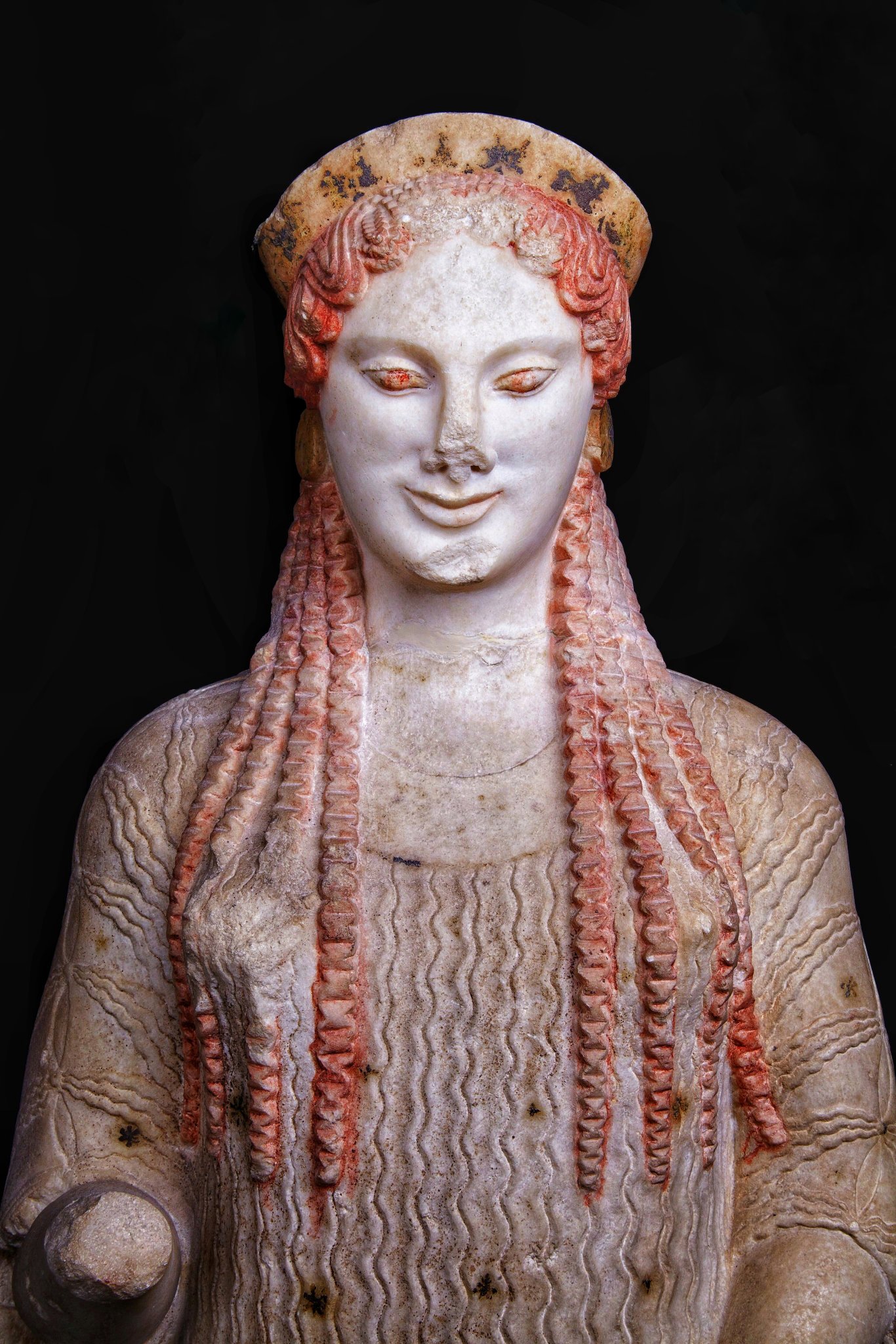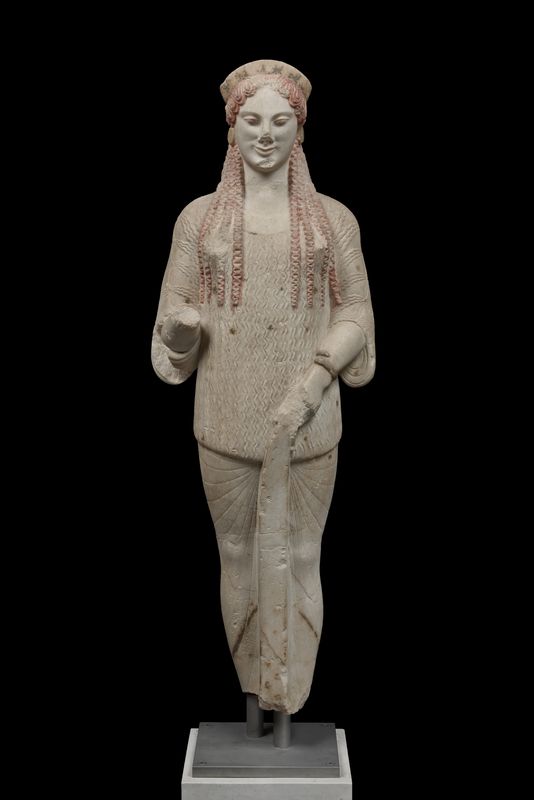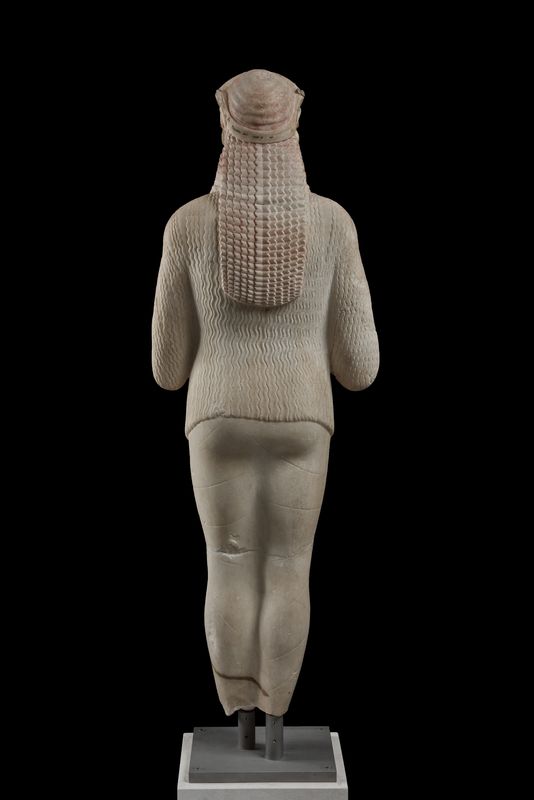Introduction
Nestled within the renowned Acropolis Museum in Athens, Greece, stands a magnificent sculpture that captivates the hearts and minds of art enthusiasts and historians alike. This remarkable representation of a young woman, known as a “koré,” is a testament to the remarkable artistry and craftsmanship of ancient Greek sculptors. Created between 520 and 510 BC, the Koré 670 sculpture, as it is commonly referred to, stands out among the other sculptures adorning the Acropolis of Athens, distinguished by its exquisite execution and stunning polychromy.

In this blog post, we will delve into the fascinating history and significance of this remarkable work of art, exploring its intricate details, the insights it provides into the cultural and artistic traditions of ancient Greece, and the lasting impact it continues to have on our understanding of one of the most influential civilizations in human history.
The Koré: A Captivating Representation of Ancient Greek Artistry
The term “koré” (plural: kórai) refers to a specific type of ancient Greek sculptural representation of a young woman, often depicted in a standing position and adorned with intricate details and decorations. These sculptures were a prominent feature of the Acropolis of Athens, serving as offerings to the gods and goddesses who were venerated on the sacred hilltop.
The Koré 670 sculpture is a prime example of the exceptional craftsmanship and attention to detail that characterized ancient Greek sculptural works. Meticulously carved from marble, this captivating figure stands tall, her gaze fixed ahead with a serene expression. The delicate folds of her drapery, the intricate patterns adorning her garments, and the subtle curves of her body all contribute to the sculpture’s remarkable beauty and elegance.
Preserving the Vibrant Colors of Antiquity
What sets the Koré 670 apart from many of the other sculptures found on the Acropolis is its remarkable state of preservation. Unlike the now-ubiquitous white marble statues that have become synonymous with ancient Greek art, the Koré 670 retains traces of its original polychromy, or multicolored decoration.

Through careful examination and analysis, scholars have been able to uncover the vibrant hues that once adorned this magnificent sculpture. The koré’s garments, for instance, were likely decorated with intricate patterns and designs in a variety of colors, including rich reds, blues, and greens. The sculptor’s attention to detail is further evidenced by the subtle use of pigments to accentuate the folds and contours of the drapery, creating a sense of depth and movement that brings the sculpture to life.
The preservation of these original pigments is a remarkable feat, as the elements and the passage of time have often erased the colorful details that once adorned many ancient Greek sculptures. The Koré 670, however, has managed to retain these traces, allowing modern viewers to glimpse the true splendor and vibrancy of ancient Greek artistry.
The Significance of the Koré in Ancient Greek Culture
The Koré 670 sculpture is not merely a stunning work of art; it also serves as a window into the cultural and religious traditions of ancient Greece. These kórai were often dedicated as offerings to the gods and goddesses who were venerated on the Acropolis, with each sculpture representing a unique individual or serving a specific purpose within the broader religious and social context of the time.

In the case of the Koré 670, scholars believe that this particular sculpture may have been dedicated to the goddess Athena, the patron deity of the city of Athens and a central figure in the religious and cultural life of the ancient Greeks. The koré’s serene and dignified expression, as well as the intricate details of her attire, suggest that she was intended to serve as a representation of the goddess or one of her attendants.
Beyond its religious significance, the Koré 670 also provides valuable insights into the social and cultural norms of ancient Greek society. The sculpture’s depiction of a young, fashionably dressed woman reflects the importance placed on female beauty and status within the ancient Greek world. The intricate patterns and decorations adorning the koré’s garments, for instance, may have been indicative of her social standing or even her role within the religious or political hierarchy of the time.
The Enduring Legacy of the Koré
The Koré 670 sculpture is not merely a relic of the past; it continues to captivate and inspire art enthusiasts, historians, and scholars alike. Its remarkable state of preservation, coupled with the wealth of information it provides about ancient Greek culture and artistic traditions, has made it a centerpiece of the Acropolis Museum’s collection and a must-see destination for visitors from around the world.

Beyond its physical presence, the Koré 670 has also had a lasting impact on our understanding of ancient Greek art and its influence on Western artistic traditions. The koré’s elegant and refined aesthetic, as well as the attention to detail and craftsmanship that went into its creation, have continued to inspire and influence artists and designers throughout the centuries, from the Renaissance to the present day.
Conclusion
The Koré 670 sculpture, with its captivating beauty and enduring significance, stands as a testament to the remarkable artistry and cultural richness of ancient Greece. Through the preservation of its vibrant colors and the insights it provides into the religious, social, and artistic traditions of the time, this magnificent work of art continues to captivate and inspire all who encounter it.
As we gaze upon the Koré 670, we are transported to a bygone era, where the gods and goddesses of Olympus were revered, and the pursuit of beauty and elegance was a central tenet of the cultural and artistic landscape. It is a testament to the enduring legacy of ancient Greek civilization and a reminder of the profound impact that the artistic achievements of the past can have on the present and the future.

